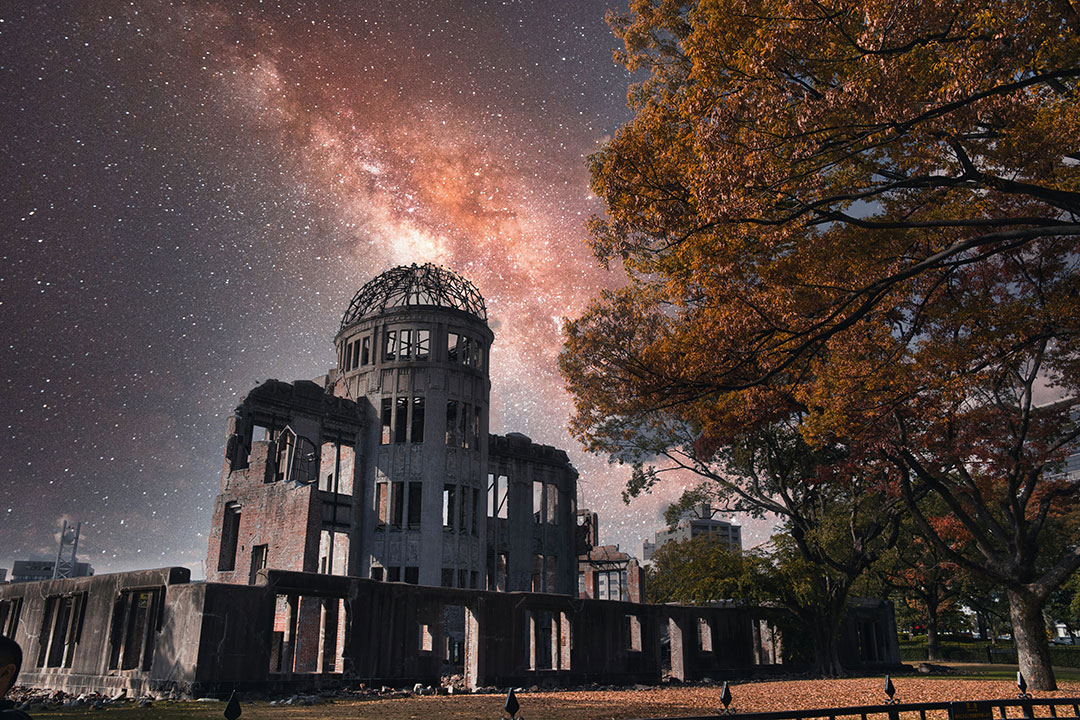
GeoLogics
By Marian Pastor Roces

On Aug. 17, in Indonesia, the government of President Prabowo Subianto postponed the release of a 10-volume “official history.” A good number of historians and activists pushed back against this history-writing project which they think will gloss over the memory of atrocities and further historical amnesia.
To several generations of activists, Indonesia has not acknowledged the 1965 murder of an estimated million-plus alleged Leftists when General Suharto took over from President Sukarno. Yet the numbers are staggering: some estimates go as high 3 million killed in cold blood. The anti-communist purge was widely known to have been supported by the United States and the United Kingdom, and halted Indonesia’s momentum towards non-aligned status during the Cold War.
Historical amnesia — a collective forgetting by deliberate means or simple human neurological inclination — is the shadow side of identity. But it’s complicated.
MEDIATED REALITY
In the film Hiroshima mon amour (1959), the French New Wave director Alain Resnais worked with a script by the esteemed Margueritte Duras about a 24-hour love affair. The story is told in flashbacks, as though those sudden recollections fired up during intense experiences.
The woman, an unnamed French actress, recalls the immediate aftermath of the hydrogen bomb detonation over Hiroshima. The man, a Japanese architect, actually lost family during that doomsday. But, fighting with the Japanese Army, he was not witness to the horror.
He tells the woman she knows nothing of the day. Her flashbacks are from film footage, newsreels stories, and broadsheets. She was in Hiroshima to film an aftermath documentary.
He, too, knows nothing of the bomb blast. His flashbacks also draw from mediated reality, fixating as he does on the name of woman’s birthplace, Nevers. He knows nothing of Nevers except for the alluring name. She does not wish to ever go back there.
Both have 2nd, 3rd, nth hand memory of the day. The reality of doomsday filters through film, newsprint, oral accounts, and delirious meanderings of the mind.
LITTLE BOY AND THE CRANE
Seventy years ago, on Aug. 6, 1945, the United States dropped the bomb named Little Boy on Hiroshima, Japan, from the B-29 aircraft named after the pilot’s mother, Enola Gay. Some 70,000 to 100,000 people died immediately in the apocalyptic light. Except for 10% of this number, the dead were all civilians. The toll increased to 135,000 to 237,000 in the ensuing months.
Only 14 years after the city’s destruction, Hiroshima mon amour already understood the malleability and media-layered qualities of memory. Today, at a remove of seven decades, recollection of this doomsday for most people alive today is necessarily splintered. Except for the handful of survivors — who continue to talk about the event and appeal for an end to nuclear proliferation — the raw experience is inaccessible.
Inaccessible and hence forgettable. Hardly anyone in the world right now remembers, or can imagine, the scale and cruelty of the destruction. Perhaps the movie Oppenheimer will take over the memory for the English-speaking world. The 21st Century narration of the Manhattan Project that created Little Boy and Fat Man (dropped in Nagasaki) is filtered through an angst-ridden American lens.
Japanese recollection communicates through small origami cranes made by children to evoke a child victim whose death by blast-triggered leukemia came after she made 1,000 of these poignant paper birds. The memory of doom filters through a deliberately peaceful state of mind.
This remembrance-as-a-crane is pervaded by a will to peace for humanity. The Manhattan Project recollection is pervaded by the heroic figure of a singular tormented genius.
Seems memory can hardly be the same.
ANOTHER 100,000
By Aug. 6, 1945, it had been five months since the end of the Battle of Manila. The event is institutionally recalled with capitals “B” and “M” because the magnitude of devastation needs, up to the present, exclamation. About as many civilians died in Manila as in Hiroshima: 100,000 people. It is a figure unremarked in world history.
The survivors of the Battle of Manila do not recall “Japanese time” (1942 to 1945) through a veil of peace. In the Philippines, largely oral accounts pass on details of torture conducted house to house in the Manila districts of Ermita and Malate, by the trapped Japanese soldiers. Curiously, few Filipinos recall deaths by American bombardment.
Selective memory operates on widely accepted narratives in given populations. To Filipinos generally, the Japanese were occupiers and the Americans were liberators. The former, unwanted and cruel; the latter, dearly awaited. This dualism framed the passage of war stories to the next generations of Filipinos, until it dissipated in recent decades among kids who took to Japanese anime big time. In time, therefore, war and Japan conflated into beautifully choreographed spectacles of carnage. Extremely alluring.
Whatever recollection of the last days of the Second World War remains — mainly held by Boomers born within a decade of Manila’s destruction — now seems impossible to sustain. Memory becomes fugitive wherever lived experience is sheathed in powerful new stories.
And as for the American dimensions of the Battle of Manila, the old comic books and the recent films, Avengers and the Justice League of America, have made slick work of dissolving possibilities of auditing the aerial attacks, including carpet bombing, that reduced one of Asia’s most beautiful cities into bloodied, concrete chaos in 1945.
Filipino National Artist for Literature Nick Joaquin wrote the lines for a plaque, called Memorare, to voice his generation’s prayer. “Let this monument be the gravestone for each and every one of the over 100,000 men, women, children, and infants killed in Manila during its battle of liberation, 3 February — 3 March 1945. We have not forgotten them, nor shall we ever forget.” And yet they are forgotten, the plaque known to very few, mostly descendants of victims.
ABOUT THE 6,000,000
By Aug. 6, 1945, Berlin was at the tail end of the Potsdam Conference, which at this point was finalizing dividing Germany and jointly supervising the destroyed Berlin by a council of the Allied powers: the Soviet Union, the United States, France, and the United Kingdom. The main actors at Potsdam were talking about the detonation of the H-bomb over Hiroshima. They detonated their own, so to speak, by the complete legal annihilation of Nazi Germany.
In the case of the postwar Federal Republic of Germany, forgetting the Nazi past and the Holocaust was entirely out of the question. West Germany institutionalized a never-forget-never-again agenda that literally pounded contrition for Nazi debauchery — the systematic killing of 6 million Jews — into Germany’s collective conscience for several generations, through the educational, political, and cultural systems of the postwar FRG, the Bundesrepublik Deutschland, and East Germany before reunification, which condemned Nazi organizations and whose state doctrine often brought their crimes to public discussion. But for both East and West Germany, and reunified Germany, it was not to take more than a few decades after 1945 for Neo-Nazis to emerge from the cracks of the Cold War political surfaces.
The question that is begged is actually more complicated than: What does it really take to ensure that the raw stories of horrific events do not slip under all kinds of screens and veils and spins? The answer — raw stories are only survivors’, no one else’s — takes two seconds to become self-evident.
But here’s the truly thorny issue: if one retelling is as truthful as another retelling, given the good faith of the teller (however misguided), and if indeed the mediation of raw experience is inevitable, then how is Never Again possible?
COHERENCE AND DOOM
A shared moral compass is first to come to mind as necessary in absolute terms. With it, commonly held stories and beliefs stabilize the adherents; more importantly, allow different versions of stories to cohere anyway by pointing to a single true north. In this the 21st Century, the compass may not have to be a Christian nor Islamic nor Taoist nor Hindu nor Humanist compass, but a compass nonetheless that is under construction in response to the arrival of machine intelligence.
Whatever shape it might take, lessons from the last 70 years oblige human beings to allow for narrative differences, no matter how wildly disparate — as Hiroshima mon amour described in the mid-20th Century — so long as coherence is possible against total annihilation.
Marian Pastor Roces is an independent curator and critic of institutions. Her body of work addresses the intersection of culture and politics.